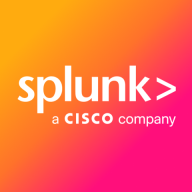

Splunk Observability Cloud and Splunk ITSI compete in the monitoring and observability category. Splunk Observability Cloud seems to have the upper hand with its open telemetry integration, offering a broader scope in visibility and real-time insights, essential for efficient monitoring, which users find beneficial.
Features: Splunk Observability Cloud stands out with open telemetry integration, fast deployment, and a simple architecture, aiding in monitoring and troubleshooting to reduce downtime. Its integration capability allows for extensive visibility. Splunk ITSI is valued for its KPI service analysis, glass tables for clear service visibility, and incident management efficiency. The service analyzer and dashboards enhance observability and enable proactive monitoring.
Room for Improvement: Splunk Observability Cloud could improve with more third-party tool integrations, better Azure support, and AI enhancements. Addressing user interface complexities and reducing search times could enhance user experience. Splunk ITSI would benefit from expanded predictive analytics, easier integration, and better documentation. Decreasing alert noise and increasing algorithm variety would also be beneficial.
Ease of Deployment and Customer Service: Both Splunk Observability Cloud and Splunk ITSI offer adaptable deployment environments, supporting multi-cloud and on-premise setups. Robust technical support is available, though response time and effectiveness vary. While both have strong documentation, Observability Cloud faces occasional integration support gaps.
Pricing and ROI: Splunk Observability Cloud commands a premium price justified by its high ROI through operational efficiency and downtime reduction. Splunk ITSI, though costly, delivers solid ROI with its incident management and service reliability features. Both solutions involve significant investment, potentially offset by streamlined operations and enhanced resilience amidst market competition.
Using Splunk has saved my organization about 30% of our budget compared to using multiple different monitoring products.
Anyone working in front-end management should recognize the market price to see the true value of end-user monitoring.
I have definitely seen a return on investment with Splunk Observability Cloud, particularly through how fast it has grown and how comfortable other teams are in relying on its outputs for monitoring and observability.
The technical support is excellent, and I would rate it at ten.
On a scale of 1 to 10, the customer service and technical support deserve a 10.
They have consistently helped us resolve any issues we've encountered.
They often require multiple questions, with five or six emails to get a response.
Splunk is highly scalable, with the ability to expand efficiently.
We've used the solution across more than 250 people, including engineers.
As we are a growing company transitioning all our applications to the cloud, and with the increasing number of cloud-native applications, Splunk Observability Cloud will help us achieve digital resiliency and reduce our mean time to resolution.
I would rate its scalability a nine out of ten.
The setup, however, must be done correctly as incorrect deployment can lead to issues.
I would rate its stability a nine out of ten.
We rarely have problems accessing the dashboard or the page.
Unlike NetScout or regular agents for APM, RUM has many problems during the POC phase because customer environments vary widely.
I would appreciate additional features in the next release of Splunk ITSI (IT Service Intelligence) such as cloud infrastructure monitoring including CICDs, Kubernetes, and similar technologies.
Splunk ITSI could benefit from including more features that other solutions support, such as vulnerability management modules.
The out-of-the-box customizable dashboards in Splunk Observability Cloud are very effective in showcasing IT performance to business leaders.
The next release of Splunk Observability Cloud should include a feature that makes it so that when looking at charts and dashboards, and also looking at one environment regardless of the product feature that you're in, APM, infrastructure, RUM, the environment that is chosen in the first location when you sign into Splunk Observability Cloud needs to stay persistent all the way through.
There is room for improvement in the alerting system, which is complicated and has less documentation available.
Splunk ITSI tends to be more expensive compared to some open-source solutions.
Splunk is a bit expensive since it charges based on the indexing rate of data.
It is expensive, especially when there are other vendors that offer something similar for much cheaper.
It appears to be expensive compared to competitors.
The predictive analysis can give you proactive information about potential bottlenecks that can occur on applications, desk, storage, SQL servers, databases, or other systems.
Splunk ITSI allows for integration with threat intelligence, enabling my organization to correlate more than two events for generating alerts.
Splunk provides advanced notifications of roadblocks in the application, which helps us to improve and avoid impacts during high-volume days.
For troubleshooting, we can detect problems in seconds, which is particularly helpful for digital teams.
It offers unified visibility for logs, metrics, and traces.
| Product | Market Share (%) |
|---|---|
| Splunk Observability Cloud | 2.0% |
| Splunk ITSI (IT Service Intelligence) | 0.7% |
| Other | 97.3% |


| Company Size | Count |
|---|---|
| Small Business | 11 |
| Midsize Enterprise | 9 |
| Large Enterprise | 32 |
| Company Size | Count |
|---|---|
| Small Business | 20 |
| Midsize Enterprise | 10 |
| Large Enterprise | 43 |
Splunk IT Service Intelligence (ITSI) is a powerful analytics-driven monitoring and analytics solution that provides real-time insights into the health and performance of IT services.
It enables organizations to proactively identify and resolve issues, optimize service delivery, and improve overall IT operations. With its advanced machine learning capabilities, ITSI automatically detects anomalies, predicts future events, and prioritizes alerts based on business impact.
The solution offers a centralized view of IT services, allowing users to visualize and analyze data from multiple sources in a single dashboard. ITSI also provides customizable KPIs, service-level agreements (SLAs), and key performance indicators (KPIs) to measure and track service performance.
With its intuitive interface and powerful analytics capabilities, Splunk ITSI empowers IT teams to deliver reliable and efficient services, ensuring maximum uptime and customer satisfaction.
Splunk Observability Cloud offers sophisticated log searching, data integration, and customizable dashboards. With rapid deployment and ease of use, this cloud service enhances monitoring capabilities across IT infrastructures for comprehensive end-to-end visibility.
Focused on enhancing performance management and security, Splunk Observability Cloud supports environments through its data visualization and analysis tools. Users appreciate its robust application performance monitoring and troubleshooting insights. However, improvements in integrations, interface customization, scalability, and automation are needed. Users find value in its capabilities for infrastructure and network monitoring, as well as log analytics, albeit cost considerations and better documentation are desired. Enhancements in real-time monitoring and network protection are also noted as areas for development.
What are the key features?In industries, Splunk Observability Cloud is implemented for security management by analyzing logs from detection systems, offering real-time alerts and troubleshooting for cloud-native applications. It is leveraged for machine data analysis, improving infrastructure visibility and supporting network and application performance management efforts.
We monitor all Application Performance Monitoring (APM) and Observability reviews to prevent fraudulent reviews and keep review quality high. We do not post reviews by company employees or direct competitors. We validate each review for authenticity via cross-reference with LinkedIn, and personal follow-up with the reviewer when necessary.